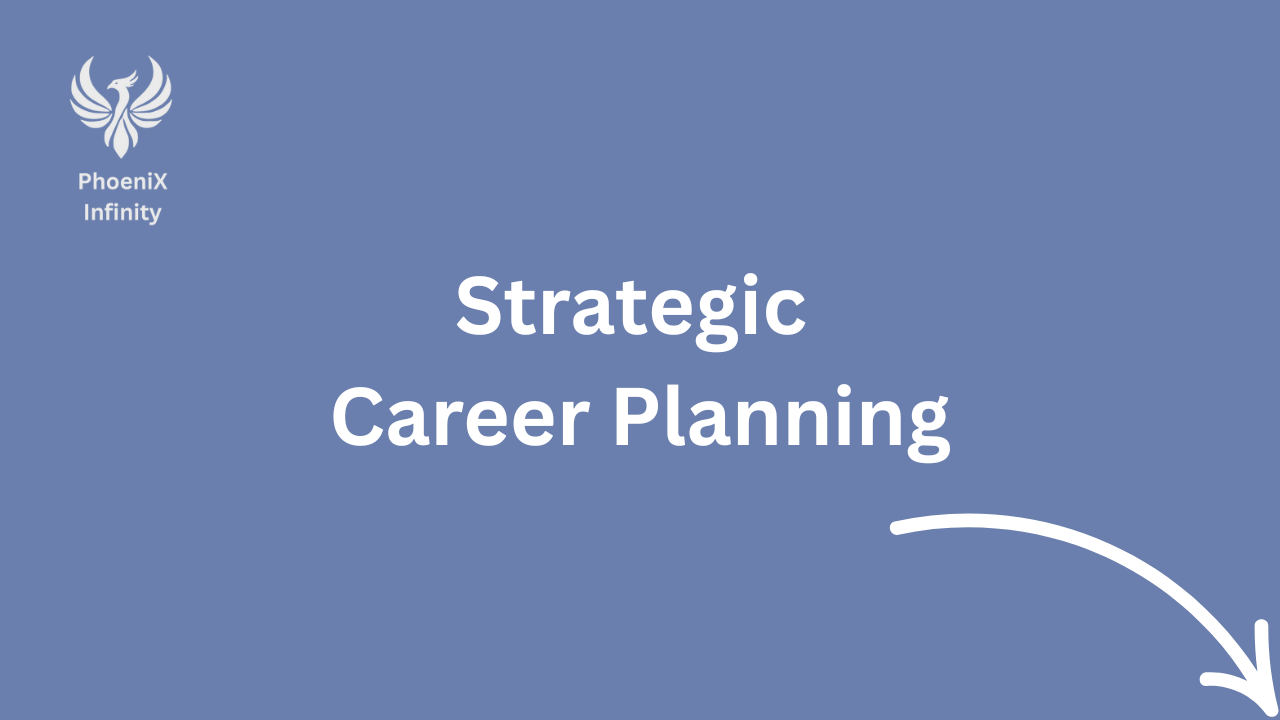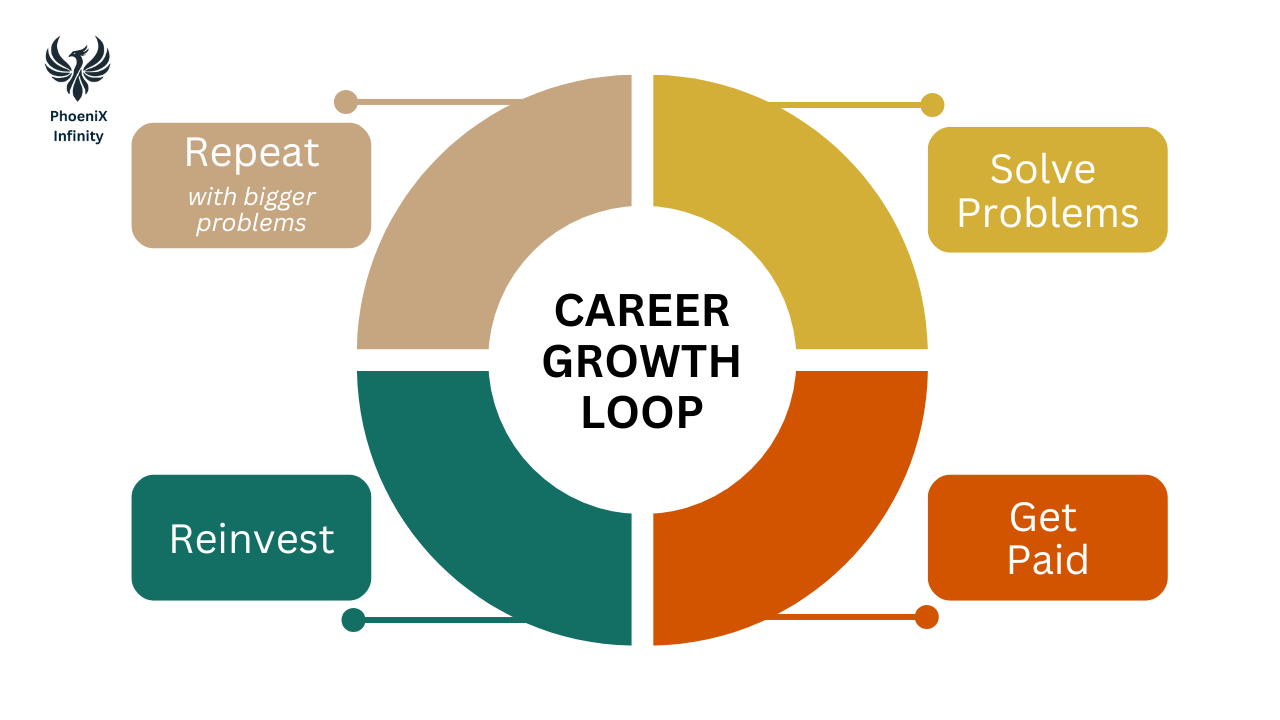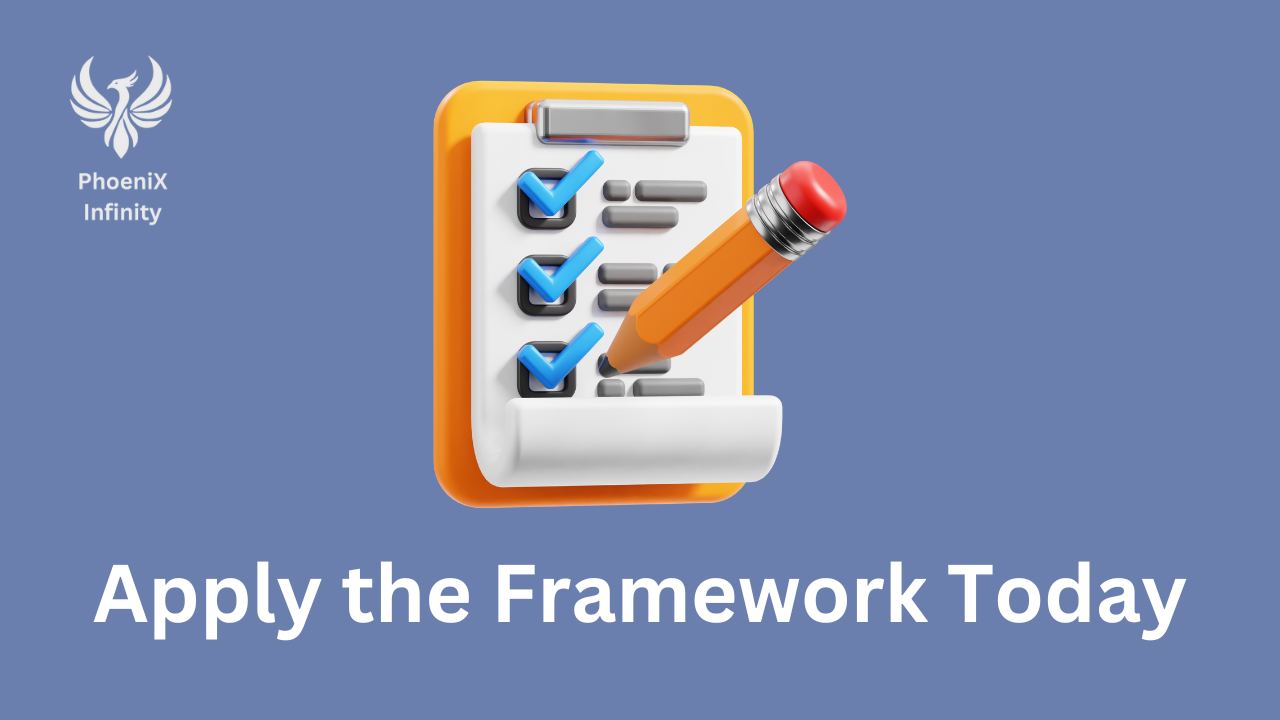Strategic Career Planning
Oct 24, 2025
You Were Trained to Work. Not to Grow.
School teaches you how to study. University teaches you how to meet deadlines. But no one teaches you how to build a meaningful career.
You land your first job thinking you’re ready. But instead of feeling empowered, you feel uncertain. Unsure where you're going. Unsure what matters. Unsure what success really looks like – beyond the next raise or promotion.
You learn how to check boxes. But not how to craft a direction.
And before you realize, you're five years in – competent, dependable, and slightly adrift.
This isn’t your fault. It’s the system’s failure to teach you the one skill that matters most:
How to think about your career strategically.
A Job Title Isn’t a Career – It’s a Step
We slowly started to believe the biggest myth in career development.
Thinking that your role defines your worth.
- “I’m a project manager.”
- “I’m a finance analyst.”
- “I’m an operations lead.”
These are labels, not strategies.
The good news is that there is more powerful way to think of your career.
Instead, start seeing your career as a product – one that creates increasing value over time. One that you actively build, refine, and shape.
Here’s what drives the value of your career product:
- The difficulty of the problems you solve.
- The speed and quality at which you solve them.
- The style and influence with which you deliver your work.
- Your ability to communicate and showcase your value.
Think of the equation that drives your value:

You don’t get promoted for how long you’ve been in your role. You get promoted for the value you deliver – and the clarity with which others understand it.
So let’s learn how to plan for that value – strategically.
Strategic Career Planning: Step-by-Step Framework
In a separate article, we explored the career growth loop:

It’s a powerful cycle – but only if you are driving it with deliberate planning.
So today, we’re zooming in. Not just on growth, but on strategy: how to choose direction, develop the right capabilities, and map a plan from where you are to where you actually want to go.
This is your strategic career planning blueprint – built around seven practical steps.
1. Redefine Your Career Around Value, Not Titles
Too many professionals define their careers by their current job title.
But a job title is not a strategy. It’s a cage. So what gives a career the real substance? The problems you solve and the value you deliver.
So start here:
- Make a list of real problems you solve at work – not just tasks or responsibilities.
- What do your colleagues rely on you for when things break?
- What kind of outcomes are better because of your input?
Now, go one step further. Write your Career Value Proposition:
"I help [people/team solver [specific problems] so they can [achieve result]."
This becomes the foundation of everything – your development, your promotion strategy, and even your long-term vision.
Your career is a product. This is your product description.
2. Define the Direction You Want to Grow In
Once you’ve clarified the value you deliver now, it’s time to explore:
What kind of value do I want to deliver in five years?
Forget titles for a moment. Instead, focus on:
- What kind of problems do you want to solve?
- What kinds of teams or leaders do you want to support?
- What kind of impact would be fulfilling?
This is your Career Vision – and it should stretch you.
For example:
“I want to become a trusted cross-functional leader who drives major process transformation projects that save companies time, money, and frustration.”
Notice how that’s not a job title – it’s a value evolution.
From here, you’ll start mapping out how to build toward that vision.
3. Identify the 3 Critical Skills You’ll Need
Now that your vision is clear, the next step is capability alignment.
Ask: If I want to solve those kinds of problems, what do I need to get good at?
This is where you list the three most critical skills that support your long-term value.
For example:
If you want to move into business strategy, you may need:
- Executive communication
- Data storytelling
- Prioritization under ambiguity
If your path is toward leading teams in a growing startup, you might focus on:
- Team leadership
- Conflict resolution
- Scalable process design
Don’t worry about perfection. This list will evolve. But it's important to get specific.
Strategy without building up capabilities is just wishful thinking.

4. Audit Your Current Skill Level
You’ve got your skill priorities – now it's time to get honest.
For each of the three skills you chose, ask:
- Do I already use this in my current role?
- Am I confident applying it in high-stakes situations?
- Do others trust me with this skill?
- If I needed to teach or lead with this skill tomorrow, could I?
Some may be existing strengths you want to deepen. Others might be gaps – completely missing or underdeveloped.
Highlight:
- One or two strengths you want to make world-class.
- One skill you must build if you’re serious about your next chapter.
Remember very often, your next leap comes from doubling down on a strength, not fixing a weakness. Consider the difference.
5. Map Your Medium- and Short-Term Roadmap
Now that you know your destination and your capability needs, it’s time to plot your path – both near and far.
Medium-Term: 3–5 Years
This is your future-ready phase.
- Define 1–2 roles you could step into in 3–5 years that match your vision.
- What kinds of problems do those roles solve?
- What would success in those positions look like?
Then, list all the skills or experiences you would need to be ready for that role.
These become your capability targets – and your filter for every development decision.
Short-Term: 1–2 Years
This is your execution window.
Start with your current role. Ask:
- Which of the medium-term skills can I start developing now?
- What projects, relationships, or habits can help me build them?
For example:
- If you need more stakeholder visibility, could you present at a team-wide review?
- If you want to improve systems thinking, could you map and improve a broken process?
You’re not waiting for a promotion to grow. You’re growing in your current role – with intention.
6. Explore Roles That Help You Build the Right Skills
Strategic careers aren’t built in a straight line. They’re built like a portfolio.
So now that you’ve mapped skills and timeframes, design your role options.
- Start with 1–2 logical next steps from your current position that align with your growth.
- Add your medium-term ideal role – the one that puts you in a position to solve bigger problems and own greater outcomes.
- Then expand your horizon:
- What alternative roles in adjacent teams or industries could build those same skills?
- What cross-functional paths are open if you shift your angle slightly?
Example: If your vision is operations strategy, you might explore:
- Ops team lead (direct path)
- FP&A analyst (cross-functional path)
- Business Operations role in a startup (portfolio skill-builder)
The point isn’t to pick just one. It’s to design multiple pathways that align with your goals – so you stay flexible and open to various opportunities.
7. Restructure Your Current Role for Strategic Leverage
Let’s bring it back to today.
Even if you don’t change roles right now, you can still radically change your trajectory by changing how you use your time.
Use the EDA Framework:
- Eliminate: What low-value tasks can you stop doing?
- Delegate: What responsibilities can someone else own so you can free up bandwidth?
- Automate: What recurring work can you streamline with tools or templates?
Then reinvest that time into:
- High-impact projects
- Cross-team collaboration
- Skill-specific practice or visibility-building
Redesigning your day is often the biggest unlock. It creates the space to evolve without waiting for permission.
Strategic careers are not reactive. They’re crafted. And they start with what you choose to focus on today.

How to Apply This in Real Life
Here’s a practical five-step plan to get started:
- Define Your Career Product: What value do you currently deliver? What problems do you solve? Why does that matter?
- Create a Value-Aligned Vision: What value do you want to deliver in 5 years? Who benefits from your work? What energizes you?
- Map the Skills You’ll Need: Choose 3–5 core skills. Audit where you stand. Prioritize development areas.
- Design a Role-Backed Roadmap: List roles or projects that could help you build those skills. Map paths from current to next to the future.
- Start Restructuring Your Current Role: Use EDA to free up time. Start taking on higher-value work. Track results and build proof.
Strategic Planning Is the Ultimate Career Advantage
You can let your career happen to you. Or you can start owning it like a product – with vision, value, and intentional momentum.
No one is coming to hand you a roadmap. That’s your job now.
But the good news? It doesn’t take 20 steps. It takes a clear vision, the right skills, and better decisions – over time.
Start today by asking:
“What do I want to be known for in 5 years?”
Then build the strategy to get there.
Do You Want to Go Deeper?
If you’re ready to turn your career into a high-value product – check out the Phoenix Career Product Training
You’ll learn how to:
- Define your career value proposition.
- Build a five-year roadmap.
- Restructure your current role.
- Accelerate your visibility and growth.
🎯 Don’t just work harder. Work smarter, with strategy.
Your career is a product. And it’s time you started building it on purpose.
Stay connected with news and updates!
Join our mailing list to receive the latest news and updates from PhoeniX.
Don't worry, your information will not be shared.
PS - You will get a surprise bonus!
I hate SPAM. I will never sell your information, for any reason.




